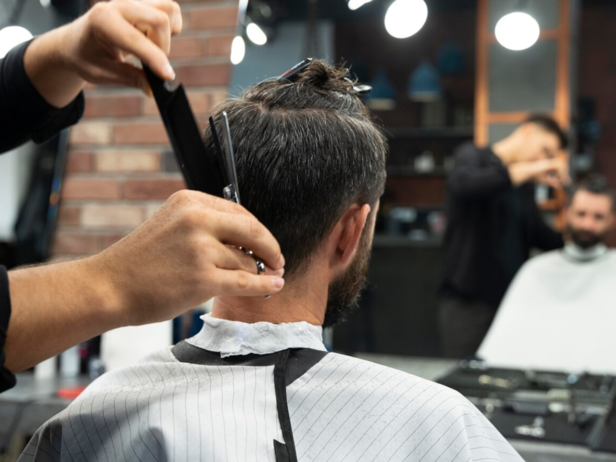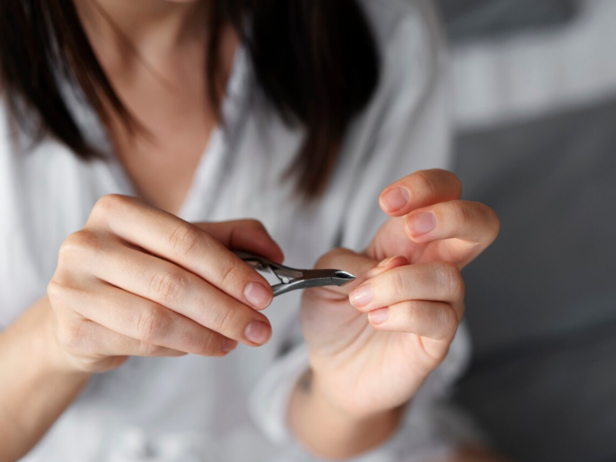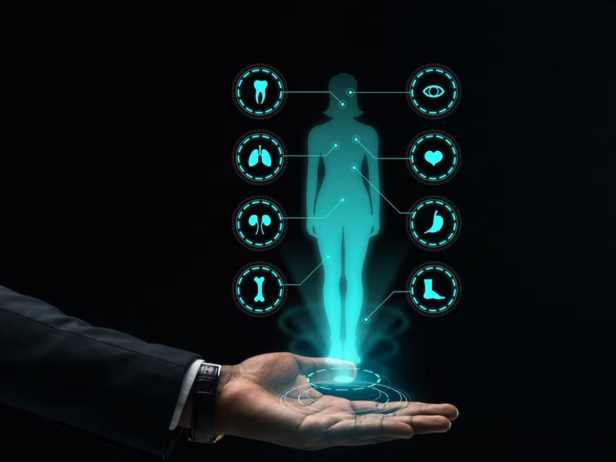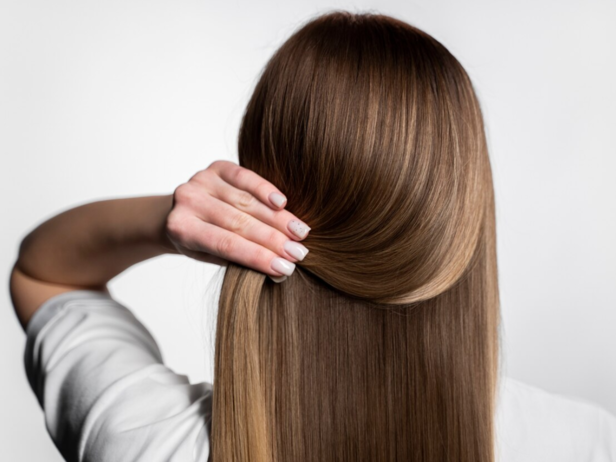Science Behind—Why Cutting Hair and Nails Are Painless
Gurjeet Kaur | Apr 13, 2025, 00:19 IST
( Image credit : Timeslife )
Ever wonder why cutting hair and nails doesn’t hurt? Dive into the science behind this painless phenomenon! Hair and nails are made of keratin, a dead protein with no nerves. Unlike skin, they lack pain receptors, so snipping them feels like nothing. Uncover the fascinating biology that lets you trim without a wince in this eye-opening exploration!
When you cut your hair and nails, you feel No pain, no fuss. Have you ever stopped to wonder why cutting your hair and nails doesn’t hurt at all? Compare that to a tiny nick on your skin, which stings like crazy. What makes these parts of your body so different? This article dives deep into the simple, but fascinating science of why hair and nail trims are painless. We’ll explore how your body is built, why it matters, and even a bit about what happens if you skip those trims. It’s a small marvel of human design that’s worth celebrating.

Hair and nails might look different, but you wonder they’re made of the same tough stuff. A protein called Keratin. This superhero protein is also in the outer layer of your skin, but in hair and nails, it’s packed tightly to form strong, protective structures. Keratin is like nature’s armor—it’s tough enough to handle brushing, washing, or typing without breaking. The key to why cutting doesn’t hurt? The parts you trim—hair shafts and nail plates—are dead. They have no nerves, no blood, and no way to feel anything. That’s the foundation of this painless process.
Why Doesn’t

When you cut your hair, you’re only slicing the hair shaft—the part sticking out of your scalp. This is just a stack of dead keratin cells, like a rope that’s no longer connected to anything alive. It has no nerves to send pain signals to your brain, so snipping it feels like nothing. The living part of your hair is deep in the follicle, hidden under your skin. That’s where blood vessels feed the hair and nerves keep things sensitive. Try pulling your hair—ouch! That hurts because you’re tugging on the follicle and the skin around it, which are full of nerves. But cutting the shaft? It’s like trimming a piece of string or paper—it can’t “feel” a thing. Your body smartly keeps the sensitive parts out of reach, so haircuts are painless, whether you’re buzzing it all off or just trimming split ends.

Nails follow the same logic. The nail plate—the hard, shiny part you cut—is made of dead keratin, just like hair. It’s a protective shield for the sensitive skin underneath, called the nail bed. When you clip your nails, you’re only touching the dead part that’s grown past the nail bed. Since it has no nerves or blood flow, your brain gets no pain signals. It’s a clean, pain-free process.
But if you’ve ever cut a nail too short, you know the pain! That’s because you’ve hit the nail bed, which is alive with nerves and blood vessels. Same with ripping a hangnail—it hurts because you’re pulling living skin. Your body makes sure the trimmable part of the nail is “offline,” so you can shape or shorten it without wincing, as long as you don’t go too deep.

Human body is like a master engineer. Nerves—the wires that carry pain signals—are only where they’re needed, like your skin, muscles, or the roots of your hair and nails. Pain is your body’s alarm system, warning you about harm, like a cut that could get infected. But cutting hair and nails doesn’t hurt you—these parts are meant to be shed or trimmed. So, your body skips the nerves in the dead keratin layers, saving pain for when it matters. Think of hair and nails like a tree’s leaves or bark. The outer parts fall off or get cut without harming the tree, while the roots stay safe. Hair follicles and nail beds are the “roots” of your grooming system, tucked away so you can trim the outer layers worry-free.

Keratin is a big deal in nature. In humans, it strengthens hair, nails, and the outer layer of skin, keeping germs out and moisture in. In animals, keratin forms claws, horns, feathers, beaks, and even turtle shells! It’s incredibly versatile—flexible enough for hair to bend, hard enough for nails to protect your fingertips. Once keratin cells in hair and nails die, they harden and get pushed out, losing all connection to your body’s sensory system. This lets you cut, dye, or paint them without feeling a thing. It’s like your body saying, “Go ahead, style away—these parts are done serving their purpose.” Keratin’s durability also means your hair and nails can handle daily wear, from shampooing to typing, without breaking down.

To see why hair and nail cutting is special, compare it to your skin. Skin is alive, packed with nerves, blood vessels, and cells that scream “ouch” when you get a cut. Even a small scrape hurts because it’s a signal to protect yourself from infection or bleeding. Hair and nails, once grown out, aren’t critical anymore—they’ve done their job of protecting or growing. So, your body lets them go without a fuss, making grooming a painless task. It’s a clever balance of function and safety.

Skipping haircuts or nail trims can cause issues, but not pain. Long hair might tangle, split, or break, making it harder to manage. Overgrown nails can be worse—they might crack, split, or grow into the skin, causing painful ingrown nails that risk infection. Extremely long nails can also curve, making it tough to grab things or type. Regular trimming keeps hair healthy and nails functional, and since it’s painless, there’s no reason to avoid it. Your body makes maintenance easy so you can stay comfortable.
This painless process isn’t just a random quirk—it’s meaningful. Hair and nails do important jobs. Hair keeps your scalp warm, shields it from sun, and even helps you express yourself through styles. Nails protect your fingertips, help you pick up small objects, and add flair with polish or shapes. Being able to trim them without pain lets you maintain them effortlessly, boosting your health and confidence. Humans aren’t alone in this. Animals rely on keratin, too, and many shed or lose it painlessly. Birds molt feathers, snakes shed skin, and deer drop antlers—all made of keratin, all without pain. For us, cutting hair and nails is like a mini version of molting. It’s a natural cycle of growth and renewal, designed to keep us healthy without discomfort. Next time you trim, think of it as your body’s way of shedding what it no longer needs.
Cutting your hair and nails is painless because they’re made of dead keratin—no nerves, no blood, no way to feel a thing. Your body saves its alarms for the living parts, like follicles and nail beds, keeping them safe while you trim away. It’s a brilliant design that makes grooming easy, letting you maintain your style and health without a wince. From protecting your scalp to shielding your fingers, hair and nails do big jobs, and their painless upkeep is a gift. So next time you grab scissors or clippers, smile at how clever your body is—one snip at a time, it’s got you covered.
Explore the latest trends and tips in Health & Fitness, Travel, Life Hacks, Fashion & Beauty, and Relationships at Times Life!
What Are Hair and Nails Made Of?

Hair and Nails
( Image credit : Freepik )
Hair and nails might look different, but you wonder they’re made of the same tough stuff. A protein called Keratin. This superhero protein is also in the outer layer of your skin, but in hair and nails, it’s packed tightly to form strong, protective structures. Keratin is like nature’s armor—it’s tough enough to handle brushing, washing, or typing without breaking. The key to why cutting doesn’t hurt? The parts you trim—hair shafts and nail plates—are dead. They have no nerves, no blood, and no way to feel anything. That’s the foundation of this painless process.
Why Doesn’t Cutting Hair Hurt?

Cutting Hair
( Image credit : Freepik )
When you cut your hair, you’re only slicing the hair shaft—the part sticking out of your scalp. This is just a stack of dead keratin cells, like a rope that’s no longer connected to anything alive. It has no nerves to send pain signals to your brain, so snipping it feels like nothing. The living part of your hair is deep in the follicle, hidden under your skin. That’s where blood vessels feed the hair and nerves keep things sensitive. Try pulling your hair—ouch! That hurts because you’re tugging on the follicle and the skin around it, which are full of nerves. But cutting the shaft? It’s like trimming a piece of string or paper—it can’t “feel” a thing. Your body smartly keeps the sensitive parts out of reach, so haircuts are painless, whether you’re buzzing it all off or just trimming split ends.
Why Doesn’t Cutting Nails Hurt?

Nails Cutting
( Image credit : Freepik )
Nails follow the same logic. The nail plate—the hard, shiny part you cut—is made of dead keratin, just like hair. It’s a protective shield for the sensitive skin underneath, called the nail bed. When you clip your nails, you’re only touching the dead part that’s grown past the nail bed. Since it has no nerves or blood flow, your brain gets no pain signals. It’s a clean, pain-free process.
But if you’ve ever cut a nail too short, you know the pain! That’s because you’ve hit the nail bed, which is alive with nerves and blood vessels. Same with ripping a hangnail—it hurts because you’re pulling living skin. Your body makes sure the trimmable part of the nail is “offline,” so you can shape or shorten it without wincing, as long as you don’t go too deep.
Your Body Protects the Living Parts

Human Body
( Image credit : Freepik )
Human body is like a master engineer. Nerves—the wires that carry pain signals—are only where they’re needed, like your skin, muscles, or the roots of your hair and nails. Pain is your body’s alarm system, warning you about harm, like a cut that could get infected. But cutting hair and nails doesn’t hurt you—these parts are meant to be shed or trimmed. So, your body skips the nerves in the dead keratin layers, saving pain for when it matters. Think of hair and nails like a tree’s leaves or bark. The outer parts fall off or get cut without harming the tree, while the roots stay safe. Hair follicles and nail beds are the “roots” of your grooming system, tucked away so you can trim the outer layers worry-free.
Role of Keratin

Hair
( Image credit : Freepik )
Keratin is a big deal in nature. In humans, it strengthens hair, nails, and the outer layer of skin, keeping germs out and moisture in. In animals, keratin forms claws, horns, feathers, beaks, and even turtle shells! It’s incredibly versatile—flexible enough for hair to bend, hard enough for nails to protect your fingertips. Once keratin cells in hair and nails die, they harden and get pushed out, losing all connection to your body’s sensory system. This lets you cut, dye, or paint them without feeling a thing. It’s like your body saying, “Go ahead, style away—these parts are done serving their purpose.” Keratin’s durability also means your hair and nails can handle daily wear, from shampooing to typing, without breaking down.
Why Pain Matters Elsewhere

Hair cut pain
( Image credit : Freepik )
To see why hair and nail cutting is special, compare it to your skin. Skin is alive, packed with nerves, blood vessels, and cells that scream “ouch” when you get a cut. Even a small scrape hurts because it’s a signal to protect yourself from infection or bleeding. Hair and nails, once grown out, aren’t critical anymore—they’ve done their job of protecting or growing. So, your body lets them go without a fuss, making grooming a painless task. It’s a clever balance of function and safety.
What If You Don’t Cut Them?

haircuts
( Image credit : Freepik )
Skipping haircuts or nail trims can cause issues, but not pain. Long hair might tangle, split, or break, making it harder to manage. Overgrown nails can be worse—they might crack, split, or grow into the skin, causing painful ingrown nails that risk infection. Extremely long nails can also curve, making it tough to grab things or type. Regular trimming keeps hair healthy and nails functional, and since it’s painless, there’s no reason to avoid it. Your body makes maintenance easy so you can stay comfortable.
Why This Matters for You
Cutting your hair and nails is painless because they’re made of dead keratin—no nerves, no blood, no way to feel a thing. Your body saves its alarms for the living parts, like follicles and nail beds, keeping them safe while you trim away. It’s a brilliant design that makes grooming easy, letting you maintain your style and health without a wince. From protecting your scalp to shielding your fingers, hair and nails do big jobs, and their painless upkeep is a gift. So next time you grab scissors or clippers, smile at how clever your body is—one snip at a time, it’s got you covered.
Explore the latest trends and tips in Health & Fitness, Travel, Life Hacks, Fashion & Beauty, and Relationships at Times Life!
